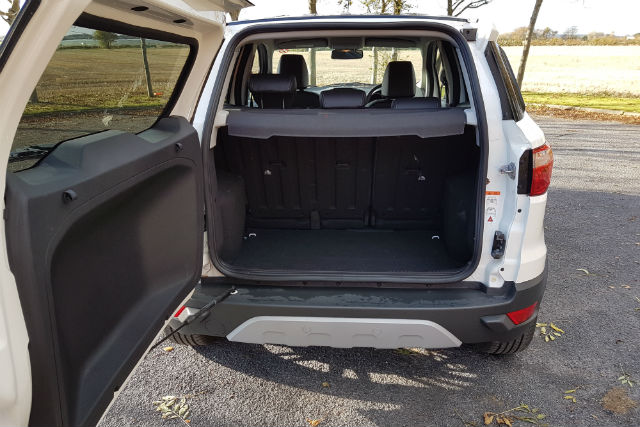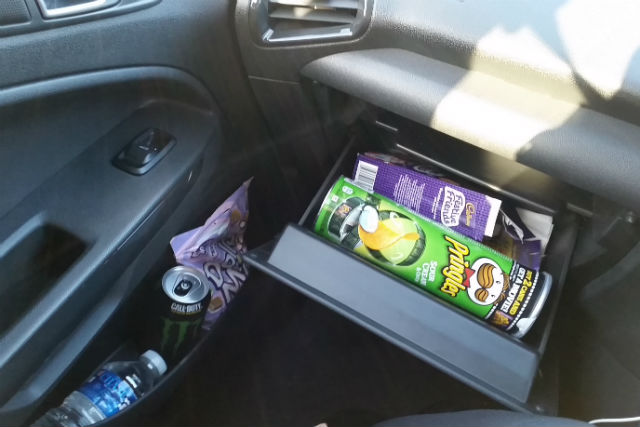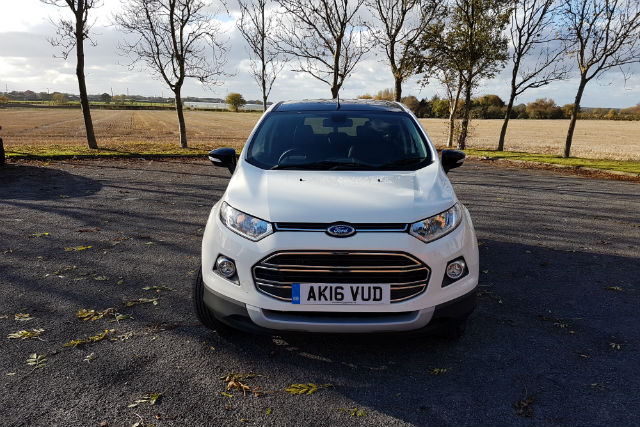Driving the Ford EcoSport over the Christmas holidays, I was asked by family and friends on numerous occasions - “So, is that EcoSport you’re driving just a bigger Ford Fiesta then?”
After explaining that the EcoSport is based on the Fiesta platform but is designed for those who want more of a high-riding, SUV appeal, ultimately my answer was yes… and no.
Like many other supermini-derived SUV crossovers – the Peugeot 2008, Vauxhall Mokka, Renault Captur – the Ford EcoSport’s agility has come into question. But is that sacrifice really worth it?
From transporting presents to escorting parents, loading up shopping to motorway slogging (a Christmas Jingle seemed appropriate), I used the EcoSport as my festive wheels and explored whether Ford’s crossover is just a Fiesta supermini with big pockets.
Added function but less finesse?
Rule of thumb with most cars is that the taller they are the less you can – and should - chuck them into bends. The reason being is that taller vehicles lean more in the corners.
At 1,633mm in height, the EcoSport is 138mm taller than the Fiesta (and 48mm longer) and has a rejigged and cushier ride, which makes for greater comfort levels but considerably more body roll in the corners. Of course, with more height typically comes greater flexibility with regards to practicality.
There are some similarities in the way the two cars handle though, with both being effortless to drive around the city and urban environments. But there is no denying that the agility of the EcoSport during spirited driving is a fair bit off that of the Fiesta.
Does its Burly Physique Pay Off?
Boot space in the EcoSport spans from 310 - 1,238 litres – this is compared to 290 – 974 litres in the Fiesta. The EcoSport has flexibility on its side though.
Depending on how you configure the rear seats of the EcoSport will result in different amounts of boot space. There are essentially three different positions for the rear seats: reclined, normal, and straight – which results in 310, 333 and 375 litres of boot space respectively.
You don’t just get up to 85 litres more boot space though. The load space of the EcoSport is easier to access and negotiate luggage around, mainly due to the out-swinging door at the rear which replaces the conventional boot lid.

Finding the button to open the boot can be a bit like Where’s Wally at first, and getting used to leaving enough space behind you to open it can be a pain – but ultimately it results in much better accessibility. With a lower loading lip and wider access, the boot of the EcoSport feels much bigger than the Fiesta’s too.
With various seating positions, the EcoSport offers greater comfort for rear passengers, allowing them to recline and have a nap on longer journeys. Head room is much better than the Fiesta as well, with room being excess instead of merely adequate.
Similar Pet Peeves and Perks
Aside to their differences, the Fiesta and EcoSport also have some similar pros and cons. For example, rear legroom is so so for both models, elbow room is lacking and there is a large hump at the fold of the rear seats when they are folded down.

On the plus side, both the Fiesta and EcoSport have decent-sized door bins in the front – although their sheer depth can indivertibly hide things from you – and both their gloveboxes are actually useable, as shown by my selection of long journey snacks.
Is the EcoSport a Worthy Big Brother to the Fiesta?
If you are wanting Fiesta fun factor with SUV styling then you may end up a little disappointed with the EcoSport. Crossovers are supposed to offer the personality of an SUV with the underpinnings of a supermini – and the EcoSport does – but it clearly has its limits.

If enhanced practicality is what you are after though, the EcoSport does offer a step-up from its smaller supermini brother. There are more practical rivals on the market, but if you are a Ford fan and don’t care too much about eating up country lanes, then the EcoSport is worth a look.



